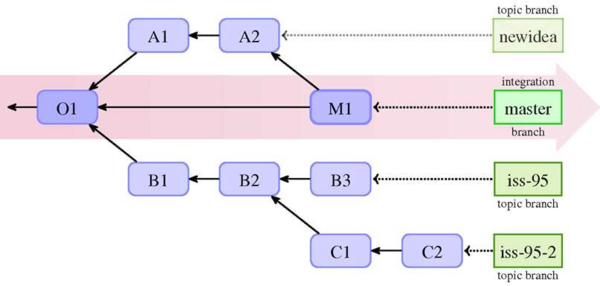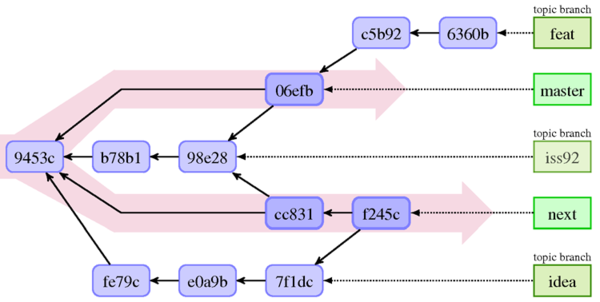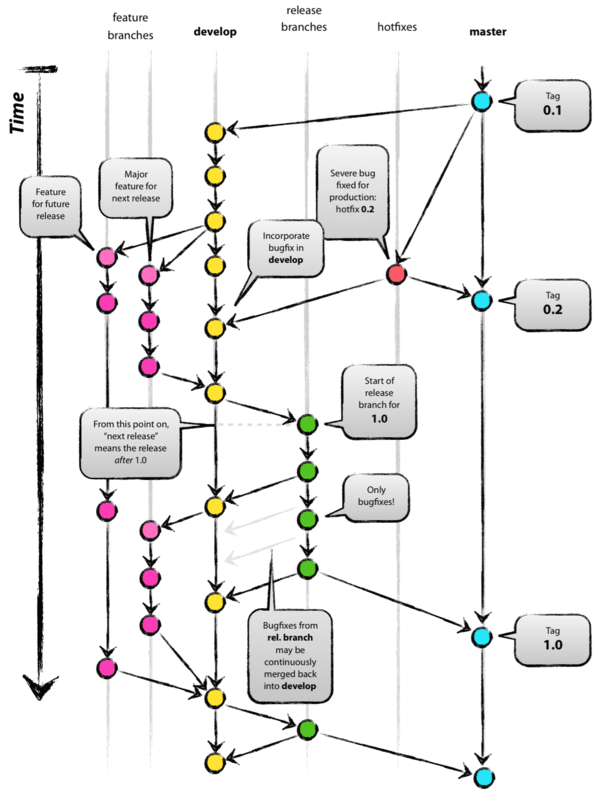Git - Branching Models
Jump to navigation
Jump to search
THIS IS A DRAFT
This text may not be complete.
<slideshow style="nobleprog" headingmark="⌘" incmark="…" scaled="true" font="Trebuchet MS" >
- title
- Git Branching Models
- author
- Lukasz Sokolowski
</slideshow>
Branching models ⌘
- The release and trunk branches workflow
- The graduation, or progressive-stability branches workflow
- The topic branches workflow
- Git-flow
The release and trunk branches workflow ⌘
- single integration branch (usually master)
- centralized way
- release candidates are cut (tagged) from the release branch
The graduation, or progressive-stability branches workflow ⌘
- You should never merge a less stable branch into more stable one, as merging would bring all the unstable history
The topic branches workflow ⌘
- Example1. The topic branches workflow with one integration branch ( master ) and three topic or feature branches.
- Among the topic branches, there is one (namely, newidea ) already merged in the integration branch and one ( iss-95-2 ) dependent on the feature developed in the other feature branch ( iss-95 here)
- Example2. The topic branches workflow with two graduation branches.
- Among topic branches, there is one ( iss92 ) that is considered stable enough to be merged into both the next (unstable) and master (stable) graduation branches.
- One ( idea ) that got merged into next for testing and one ( feat ) just created from master
- Example of scenario (next slide)
Example of scenario ⌘
- Example of scenario (maintainer (the release manager) creates a new release)
git log master..maint (check if empty, if not then test and try to merge maint into master) git tag -s -m "Foo version 1.4" v1.4 master git push origin v1.4 master git checkout maint git merge --ff-only master git checkout next git reset --hard master git merge ai/topic_in_next_only_1... (git branch --no-merged next) git pull ... + 990ffec...cc831f2 next -> origin/next (forced update) ...
Git-flow ⌘
- more advanced version of the topic
- uses two main long-running graduation branches to separate the production-ready stable state from the work involved with integration of the latest delivered ongoing development
- Each new feature is developed on a topic branch
- Release branches are forked off when the stable state reflects, or is close to, the desired state planned for the new release
- The release branch might exist only until the time the project release it was created for is rolled out, or it might be left to gather maintenance work: bug fixes for the given release
- Hotfix branches are like release branches, but for an unplanned release usually connected with fixing serious security bugs




